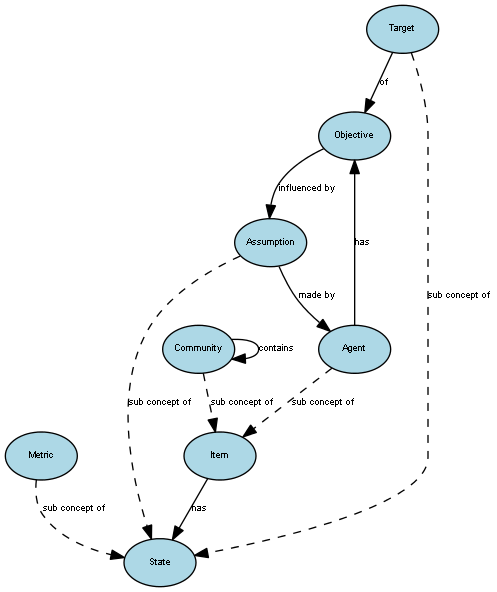|
|
Smart City Concept Model |
| Name | Objectives |
|---|---|
| Model | Smart City Concept Model |
 |
ORGANIZATIONs and individual PEOPLE will have a series of OBJECTIVEs setting their reasoning and ambition for the changes that they desire. Some of these might be long term, for example * providing suitable housing * reducing carbon emissions * reducing unemployment , while others might be more immediate or real-time such as * optimum energy usage * maintaining safe water levels The model combines the concepts of PERSON and ORGANISATION into the concept of AGENT. This simplifies the relationships that would often otherwise need to refer to either. Where an OBJECTIVE can be quantified, it can be linked to a series of TARGETs which are the observable STATEs of the impacted ITEMs. OBJECTIVEs can be set that have an impact on all manner of ITEMs. The view particularly illustrates where an ITEM might be a COMMUNITY, and therefore the OBJECTIVE will be about the well-being of that COMMUNITY. OBJECTIVEs might be set on the basis of a series of ASSUMPTIONs, which capture a predicted future STATE of one of more ITEMs. The gap between an ASSUMPTION and a TARGET might define the change that is sought by the OBJECTIVE. For example * COLLECTION - houses for rent under £400 per week * TARGET - 10,000 by 2016 * OBJECTIVE - provide adequate affordable housing * ASSUMPTION -10,000 households will require affordable housing by 2016 METRICs are regularly published which track the actual STATE of an ITEM, and can be used to consider if TARGETs have been achieved. |
© istanduk